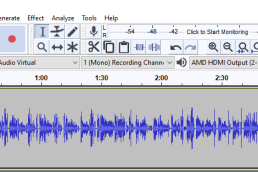How do I Setup Paging for a VoIP System?
The question of paging arises often when switching from a traditional, on-premise phone system to a VoIP solution. Traditional telephone system processors almost all contain the ability to page via the phones plus 1 external output. VoIP phones typically include paging functionality, but adding external PA amplifiers is where things can get tricky. First, let’s cover the 2 main types of paging when it comes to VoIP:
VoIP Paging via SIP Call
SIP signaling (the standard by which most VoIP phones communicate) contains the ability for an “auto answer” call. VoIP PBX “controllers” such as Asterisk, Avaya IP Office, etc. allow creation of a paging group. When a call is placed to that group, the PBX sends out a SIP auto answer call to each one of the devices in the group. Different manufacturers may have limits to the number of devices allowed in such a group; Avaya IP Office limits you to 64 devices. The biggest upside to this paging style is that it most closely resembles traditional telephone paging. This method also does a good job of paging devices across multiple networks. One major downside is the bandwidth consumed – around 100 Kbps per device being paged.
VoIP Paging via Multicast
Another VoIP paging style is multicast. This method uses multicast network traffic to spread the audio signal and the various VoIP devices “listen” for an active signal. In fact, the multicast paging setting is called “Multicast Listener Address”. VoIP devices can usually be set to listen to multiple multicast addresses and/or port numbers which in turn allows for distinct paging zones. The upside here is that a single stream (about 100 Kbps) is shared between all your VoIP devices which significantly reduces network load. You also have essentially no limit as to how many devices can be paged at one time. As for downside, the devices all have to exist on a single multicast network segment. This limitation is most problematic if you have a need to page multiple sites at the same time.
SIP Call and Multicast Hybrid
Some VoIP paging interfaces will convert SIP Auto Answer paging to Multicast paging which in turn gives you the benefits of both worlds! One example is the Algo 8301. Algo’s web page on SIP paging concepts is currently a very helpful resource in this regard.
VoIP Paging Devices
Here is a rundown of a few VoIP devices and what they do for VoIP Paging:
Snom PA1 – Low cost VoIP paging adapter with SIP auto answer and multicast capability. Can be a bit difficult to configure but is a great interface to traditional 70 Volt PA amplifiers.
Algo 8301 – VoIP paging adapter with SIP auto answer and multicast capability. Also does bell scheduling and SIP to multicast conversion.
Algo 8180 – VoIP paging speaker with external output. Similar to the legacy Algo Duet but built for VoIP.
Algo 8188 – In ceiling VoIP paging speaker, powered via POE. More expensive than traditional 70V PA speakers, but worthwhile in smaller numbers.
Yealink T54W – VoIP phone easily capable of sending & receiving both Auto Answer and Multicast paging signals
Avaya J169 – Open SIP VoIP phone, capable capable of Auto Answer and Multicast paging signals. You have to specifically press “End Call” to stop multicast paging on current firmware version.
Yealink W73 – VoIP cordless, slightly varying results with Auto Answer and Multicast depending of firmware version
Bill Atwood
Manager, Atcom Systems Inc. Located in Calgary, Alberta
Subscribe to our Newsletter for Updates and News

Headquartered in Calgary, supporting Canadian businesses
Atcom Systems is a Canadian leader in modern, efficient, and user-friendly solutions that meet the needs of clients in diverse industries and solve key communication challenges.
Articles and resources
June 11, 2025
What to Do When Smart Caller ID Shows the Wrong Name
January 14, 2025













